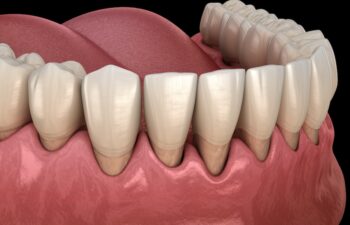What Causes Gum Recession & Can It Be Reversed?

Noticing that your teeth look “longer” than they used to? You’re not imagining it—your gums might be receding. Gum recession happens when the gum tissue surrounding your teeth wears away or pulls back, exposing more of the tooth (or even its root). At Curtis Family Dentistry, with locations in Mooresville and Troutman, NC, we often see patients concerned about this gradual change. The good news? It’s common, manageable, and in many cases, treatable.
Why Gums Recede
Gum recession isn’t caused by just one thing—it usually develops slowly over time from a mix of factors:
- Brushing too hard: Even with the best intentions, aggressive brushing or using a hard-bristled toothbrush can wear down gum tissue.
- Gum disease: Bacterial infection in the gums and bone is one of the leading causes of recession.
- Teeth grinding (bruxism): Chronic grinding or clenching puts extra stress on the gums and supporting bone.
- Tobacco use: Smoking and chewing tobacco reduce blood flow to the gums, making them more prone to damage.
- Genetics and aging: Some people are simply more susceptible to gum recession, even with good oral hygiene.
Sometimes, people with excellent brushing habits still develop gum recession because they scrub so diligently trying to keep their mouths clean.
Why It Matters
When gums recede, it’s not just about appearance. Exposed roots can make teeth more sensitive to temperature, more prone to cavities, and more vulnerable to wear. You might also notice small gaps forming between teeth, sometimes called black triangles. These spaces can collect food and plaque more easily, making it even more important to protect and maintain gum health.
Can Gum Recession Be Reversed?
Once gum tissue is lost, it doesn’t grow back on its own—but that doesn’t mean there’s nothing you can do. The goal is to stop it from getting worse and, in many cases, restore what’s been lost.
For mild cases, gentle brushing, regular cleanings, and sometimes a custom nightguard (to prevent grinding) can help prevent further damage. When more tissue support is needed, treatments like gum grafting or guided tissue regeneration can rebuild the gumline and protect exposed roots.
Gum grafting uses a small amount of tissue—either from your palate or a donor source—to cover the exposed areas. Guided tissue regeneration encourages your body to regrow bone and tissue where needed. Both can restore a natural, healthy look while strengthening the foundation that supports your teeth.
Daily Habits That Help Protect Gums
- Use a soft-bristled toothbrush or an electric toothbrush with pressure control.
- Keep up with routine dental visits for early detection of changes.
- Floss gently—don’t snap it down between your teeth.
- If you clench your jaw or grind your teeth, ask about a nightguard.
- Maintain a healthy diet and stay hydrated—your gums need nutrients, too.
Preventive Dentistry at Curtis Family Dentistry
At Curtis Family Dentistry in Mooresville and Troutman, we believe healthy gums are key to a lasting smile. If you’ve noticed gum recession or changes in your gumline, our team can help you understand what’s causing it and discuss the best options for protecting your teeth and restoring your comfort.
Schedule a consultation today—your gums will thank you for it.